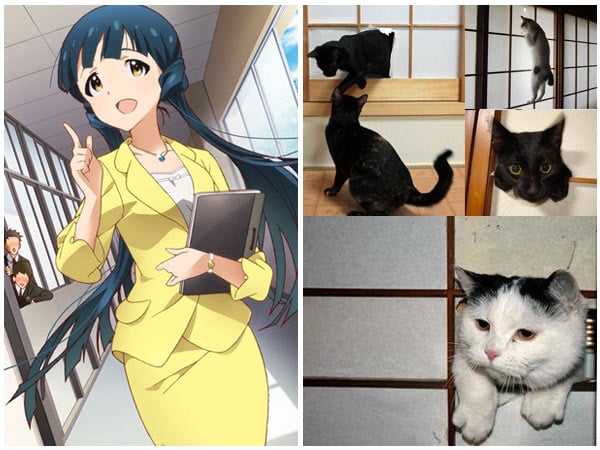
I enjoy J-List’s Twitter feed and Facebook page because they allow me to throw out random pictures and observations about Japan and get feedback in return. One reader recently asked, “Let’s say someone is 16, but is one grade higher than someone who’s 17. Which one is the senpai?” so I thought I’d write about that. 先輩 senpai, of course, is a label for an upperclassman (if in a school), or a senior in an organization like a company; the opposite is 後輩 kohai, meaning underclassman, or junior in an organization. Two students who are in the same school year are 同級生 dokyusei (“same-grade-students”), considered to be the same age despite the fact that one may have been born 11 months before the other. The concept of senpai/kohai is based on seniority, so yes, it’s quite possible to have a senpai at work who’s younger than you, especially in this modern era when people don’t necessarily work for the same company all their lives, as Japanese usually did before the 1990s. It’s less common to see strange age relationships in school settings, as education is administered to students who are strictly segregated into classes and school year, with no skipping of grades allowed. One minor challenge for my son came when he started attending a new pilot school that offered immersion in both English and Japanese. The problem was, he started attending the school in the first year it opened, so he was always the senpai to the younger grades, and never had any himself. My wife was fearful he wouldn’t learn the social skills all Japanese take for granted, e.g. how to show real respect to elder students, or how to “manage” a senior member of an organization using politeness.
There comes a time in every Japan-loving gaijin’s life when he or she must take the plunge and climb Mt. Fuji. An active volcano 12,388 ft (3,776 meters) high that rises gracefully from the prefectures of Shizuoka and Yamanashi, Mt. Fuji is an incredibly beautiful symbol of Japan that’s been revered since the beginning of the country’s history. In Japanese its name is 富士山 Fuji-san, with san being the correct pronunciation for the character for mountain, although this character is read yama in other situations. (Foreigners are famous for calling the mountain Fuji-yama rather than its correct name, Fuji-san, so try to watch out not to do this.) Climbing season is from July 1 to August 31, during high summer, since it’s really hot down at sea level yet freezing cold at the apex. Climbers usually start from the 5th level, the highest point that vehicles can reach, and take one of three walking routes up to the top (the 10th level). As you climb up, you pass the various milestones and get a special stamp on your walking stick to commemorate each achievement; eventually you’ll reach the top, out of breath from the thin air (more than twice as high as Denver) but happy to be having such a great experience. Traditionally mountains are associated with Shinto, the indigenous religion of Japan, and Mt. Fuji has been considered a holy place for thousands of years.

The San Diego Comic-Con has become the premier worldwide festival for celebrating all manner of nerd culture, from comic books to sci-fi to
anime, and we’ll be there this year, too. We’ll have lots of T-shirts, plush toys, fuku-bukuro grab bags and English-translated eroge at the show for everyone, plus our trademark J-List pocket tissues for everyone. This year J-List will be at booth 4929 in the south side of the convention hall (to your left, when facing the convention center). Can’t make it to the show? Take 10% off any order from our site by using code SDCC2014 before midnight on Sunday! (The sale doesn’t apply to some products like subscriptions, preorder products and iTunes cards.)















